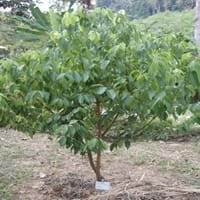Life Span
Perennial
Perennial
Origin
Eastern Europe
Southern Asia, India
Types
Not Available
Pani Kurundu, Pani Kurundu
Number of Varieties
Not Available
Habitat
Terrestrial
Farms, Open Forest, Riverbanks, Rocky areas, Tropical rainforest, Tropical regions
USDA Hardiness Zone
4-9
10-15
Sunset Zone
1a, 1b, 2a, 2b, 3a, 3b, 4, 5, 6, 7, 8, 9, 10, 11, 12, 13, 14, 15, 16, 17, 18, 19, 20, 21, 22, 23, 24
H1, H2, 23, 24
Habit
Clump-Forming
Oval or Rounded
Flower Color
Yellow, Lavender, Blue Violet
White, Light Yellow
Flower Color Modifier
Bicolor
Bicolor
Fruit Color
Not Available
Purple, Black
Leaf Color in Spring
Green, Sea Green
Light Green, Dark Green, Pink
Leaf Color in Summer
Green, Sea Green
Dark Green
Leaf Color in Fall
Green, Sea Green
Dark Green
Leaf Color in Winter
Light Green
Dark Green
Leaf Shape
Lanceolate
Small elliptic
Plant Season
Spring, Summer
Spring, Summer, Fall, Winter
Sunlight
Full Sun, Partial Sun
Full Sun, Partial Sun, Partial shade
Type of Soil
Loam, Sand
Sand
The pH of Soil
Neutral
Acidic, Neutral
Soil Drainage
Well drained
Average
Bloom Time
Spring, Late Spring, Early Summer
Late Spring, Early Summer, Summer, Late Summer, Early Fall, Fall
Tolerances
Drought
Shade areas
Where to Plant?
Ground
Ground
How to Plant?
By dividing rhizomes, tubers, Seedlings
Divison, Seedlings, Stem Planting
Plant Maintenance
Medium
Medium
Watering Requirements
Average Water Needs, Do Not over Water
Average Water Needs, Needs watering once a week
In Summer
Lots of watering
Lots of watering
In Spring
Moderate
Moderate
In Winter
Average Water
Average Water
Soil pH
Neutral
Acidic, Neutral
Soil Type
Loam, Sand
Sand
Soil Drainage Capacity
Well drained
Average
Sun Exposure
Full Sun, Partial Sun
Full Sun, Partial Sun, Partial shade
Pruning
Remove damaged leaves, Remove dead branches, Remove dead leaves
Remove damaged leaves, Remove dead branches, Remove dead leaves
Fertilizers
All-Purpose Liquid Fertilizer
fertilize in growing season, Water soluble fertilizers
Pests and Diseases
Red blotch
fungus, Insects, Leaf spot, Mites, Red blotch
Plant Tolerance
Drought
Drought
Flowers
Yes
Insignificant
Flower Petal Number
Single
Single
Fragrant Bark/Stem
No
Yes
Foliage Texture
Coarse
Medium
Foliage Sheen
Matte
Glossy
Attracts
Hummingbirds
Birds
Allergy
Skin irritation
Avoid during Pregnancy, drowsiness, Vomiting
Aesthetic Uses
Showy Purposes
Not Available
Beauty Benefits
Not Available
Good for skin and hair, Improve hair condition, Improve skin condition, Making cosmetics, Skin Problems
Environmental Uses
Air purification
Air purification, Food for insects
Medicinal Uses
Not Available
Cold, constipation, Diabetes, Diarrhea, Menstrual Disorders, Upset stomach
Part of Plant Used
Not Available
Bark, Seeds, Whole plant
Other Uses
Used as Ornamental plant
Air freshner, Condiment, Employed in herbal medicine, For making oil, Making Perfumes, Oil is used in perfume, soaps, creams, etc., Used As Food, Used as primary flavor in Italian Liqours, Used for its medicinal properties, Used as a spice
Used As Indoor Plant
No
Sometimes
Used As Outdoor Plant
Yes
Yes
Garden Design
Alpine, Edging, Mixed Border, Rock Garden, Wall
Edible, Feature Plant, Shade Trees, Tropical
Botanical Name
IRIS pumila
CINNAMOMUM verum
Common Name
Dwarf Iris
Cinnamon, Cinnamon Bark Tree
In Hindi
Dwarf Iris
दालचीनी
In French
Dwarf Iris
Cannelle
In Spanish
Enano Iris
Canela
In Greek
νάνος Ίρις
Κανέλα
In Portuguese
Dwarf Iris
Canela
In Polish
Dwarf Iris
Cynamon
In Latin
Iris Dwarf
cinnamomum
Phylum
Magnoliophyta
Magnoliophyta
Class
Liliopsida
Magnoliopsida
Family
Iridaceae
Lauraceae
Clade
Angiosperms, Monocots
Angiosperms
Tribe
Irideae
Not Available
Subfamily
Iridoideae
Cassythoideae
Number of Species
Not Available
Not Available
Importance of Dwarf Iris and Cinnamon
Want to have the most appropriate plant for your garden? You might want to know the importance of Dwarf Iris and Cinnamon. Basically, these two plants vary in many aspects. Compare Dwarf Iris and Cinnamon as they differ in many characteristics such as their life, care, benefits, facts, etc. Every gardener must at least have the slightest clue about the plants he wants to plant in his garden. Compare their benefits, which differ in many ways like facts and uses. The medicinal use of Dwarf Iris is Not Available whereas of Cinnamon is Cold, constipation, Diabetes, Diarrhea, Menstrual Disorders and Upset stomach. Dwarf Iris has beauty benefits as follows: Not Available while Cinnamon has beauty benefits as follows: Not Available.
Compare Facts of Dwarf Iris vs Cinnamon
How to choose the best garden plant for your garden depending upon its facts? Here garden plant comparison will help you to solve this query. Compare the facts of Dwarf Iris vs Cinnamon and know which one to choose. As garden plants have benefits and other uses, allergy is also a major drawback of plants for some people. Allergic reactions of Dwarf Iris are Skin irritation whereas of Cinnamon have Avoid during Pregnancy, drowsiness and Vomiting respectively. Having a fruit bearing plant in your garden can be a plus point of your garden. Dwarf Iris has no showy fruits and Cinnamon has no showy fruits. Also Dwarf Iris is flowering and Cinnamon is not flowering . You can compare Dwarf Iris and Cinnamon facts and facts of other plants too.





